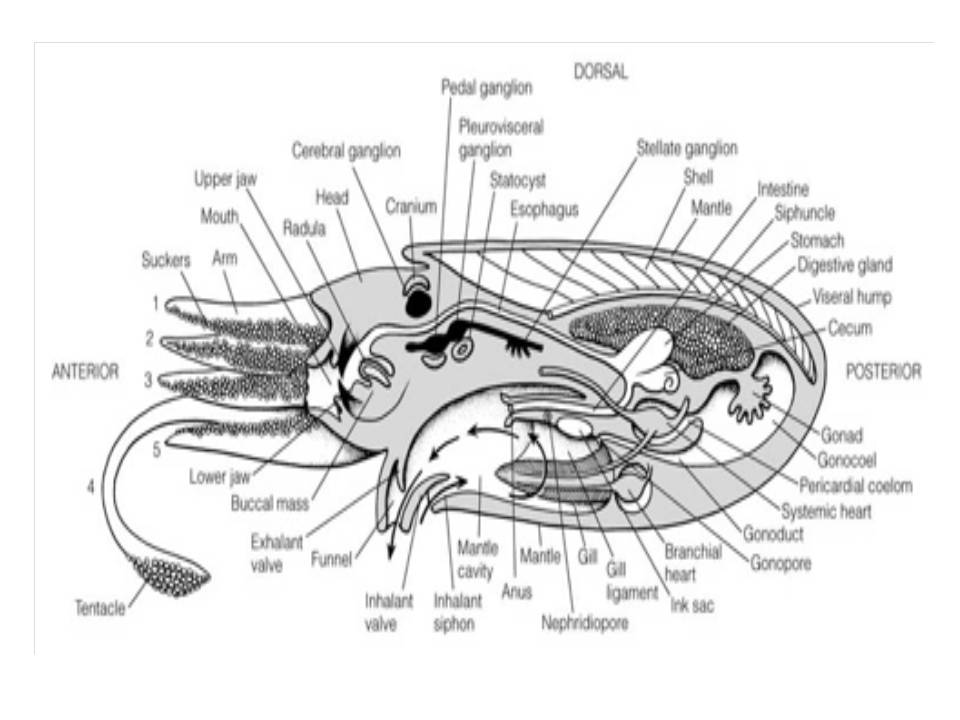Other Physiological Systems
Cephalopods are dioecious, i.e. there are males and females who each have one gonad, either an ovary or testis which release gametes into the gonocoel, a posterior body cavity linked to the mantle cavity by the gonoduct (Ruppert et al. 2004) (see Reproduction & Development tab).
Most cephalopods have a pair of gills located in the mantle cavity. They are termed ‘naked gills’ because they lack cilia, the beating of which, in other invertebrate species, creates a water current that ventilates the gills. Instead of beating cilia, the cephalopods use the slow jetting contractions of the circular muscles of the mantle (see Locomotion tab), to create a water current that flows into the mantle cavity through the inhalant siphon, passes over the gills, nephridiopores and anus, and flows out through the funnel. This creates a respiratory current which ventilates the naked gills (Ruppert et al. 2004). Under observation in the lab it appeared that even when I. notoides was not actively swimming, the mantle muscles were maintaining this water current (see video below).
|
|
|
I. notoides using mantle muscles to create a respiratory current.
Video by Samantha Reynolds.
|
Coleoid cephalopods have a closed hemal system of arteries, veins and capillaries which provide a large surface area for contact and exchange with the tissues. Blood is pumped to the body by a systemic heart and there are also two branchial hearts which circulate pressurised blood to the gills (Rupert et al. 2004).
Digestion in cephalopods starts with the capture of prey using their mobile appendages. Food is then passed to the mouth where the beak, two hard jaws made from chitin and protein, bites off pieces that are passed into the buccal cavity by the radula. The radula is a characteristic shared by all molluscs (except bivalves, in which it has been lost) and has rows of teeth, the number and type of which vary among species. A long oesophagus takes the food from the buccal cavity to the stomach. It is processed in the stomach and the U-shaped intestine and wastes pass out of the anus into the mantle cavity near the funnel. Urine is also excreted into the mantle cavity from the nephridiopores after being produced in the pericardial cavity and modified by the renal appendages and renal sac. The same water current that ventilates the gills also carries away the wastes through the exhalant siphon (Ruppert et al. 2004).
 |
|
A simplified sagittal section of a generalised coleoid cephalopod.
Taken from Ruppert et al. (2004).
|
|